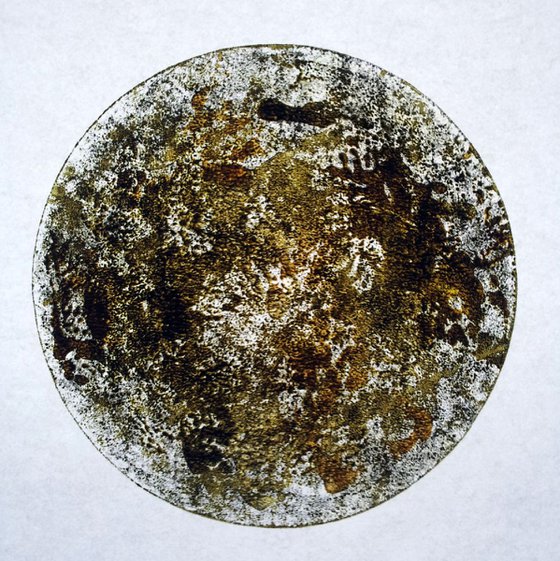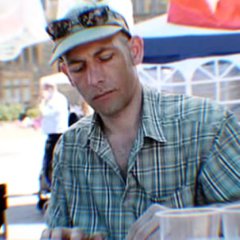- By medium
- By subject
- By budget
- Sales
- Gift cards
- Discover all art
- Artists
- Editors’ picks
- Ideas
Artwork description:
A series of monotypes using rock pigments collected from the seaside town of Watchet in West Somerset, U.K. and colours only available through industrial means. This explores ideas on the Anthropocene Age and our interventions with the landscape, extracting and re-introducing materials after manufacturing.
The series explores working collaboratively with the material and approaching the work through not having any pre-conceived idea before making the marks. The pigments are made into printing ink using medium and applied to the printing surface with a large pallet knife.
The proposition explored in this particular practice is the exploration of the space between initial chemical release in the mind towards thinking and the act of action before fully forming an idea in the mind. The action of the mark is made quick and direct to the surface, capturing the muscle action from the unconscious thought - seeing if it is possible to build layers of pre-thinking into an image to reveal something un-affected by any form of concept or conceptualised idea.
Through working with the material I am exploring an area I am becoming more involved with concerning epigenetic memory and inter-generational transference of memory revealed through the marks we leave behind - in this instance through the marks made in response to material, surface and action.
During the making of this image I was running a thought experiment on how the artists that made the work in the caves thought about the relationship between their world view and their sacred shamanic art practices. My reasons for thinking about this is that our contemporary mind has not changed much since our ancestors, therefore one can assume they must have thought in similar ways, concerning their survival - yet through this image I thought about how their language shaped their understanding of reality and how these may have contributed to ways in which they transformed landscape through their creativity.
Materials used:
Handmade printing ink on Cartridge Paper Stock
Tags:
#mind map #painting #rocks #print #printmaking #monotype #thinking #imagination #cave #caves #transformation #ancestors #thought process #handmade painting #markmaking #watchet #handmade inkMind | Cave (2016) Print
by Adam Grose MA PGCE
19 Artist Reviews
£250
- Print on Canvas
- From a limited edition of 1
- Size: 52 x 52 x 0.1cm (unframed) / 32 x 32cm (actual image size)
- Signed and numbered on the front
- Style: Organic
- Subject: Abstract and non-figurative
- Hurry only 1 left in stock
Loading
Artwork description
A series of monotypes using rock pigments collected from the seaside town of Watchet in West Somerset, U.K. and colours only available through industrial means. This explores ideas on the Anthropocene Age and our interventions with the landscape, extracting and re-introducing materials after manufacturing.
The series explores working collaboratively with the material and approaching the work through not having any pre-conceived idea before making the marks. The pigments are made into printing ink using medium and applied to the printing surface with a large pallet knife.
The proposition explored in this particular practice is the exploration of the space between initial chemical release in the mind towards thinking and the act of action before fully forming an idea in the mind. The action of the mark is made quick and direct to the surface, capturing the muscle action from the unconscious thought - seeing if it is possible to build layers of pre-thinking into an image to reveal something un-affected by any form of concept or conceptualised idea.
Through working with the material I am exploring an area I am becoming more involved with concerning epigenetic memory and inter-generational transference of memory revealed through the marks we leave behind - in this instance through the marks made in response to material, surface and action.
During the making of this image I was running a thought experiment on how the artists that made the work in the caves thought about the relationship between their world view and their sacred shamanic art practices. My reasons for thinking about this is that our contemporary mind has not changed much since our ancestors, therefore one can assume they must have thought in similar ways, concerning their survival - yet through this image I thought about how their language shaped their understanding of reality and how these may have contributed to ways in which they transformed landscape through their creativity.
Materials used:
Handmade printing ink on Cartridge Paper Stock
Tags:
#mind map #painting #rocks #print #printmaking #monotype #thinking #imagination #cave #caves #transformation #ancestors #thought process #handmade painting #markmaking #watchet #handmade ink14 day money back guaranteeLearn more

